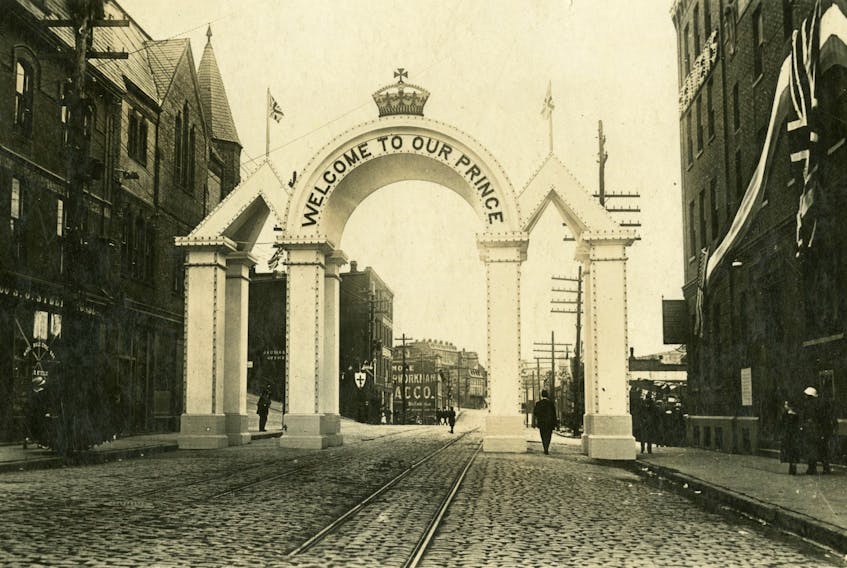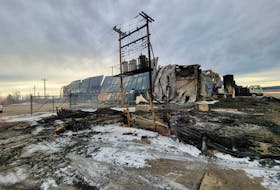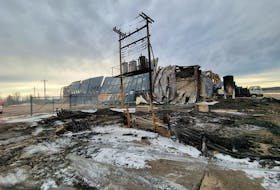ST. JOHN'S, N.L. — It’s a summer night and the Prince of Wales, heir to the Crown, steps off a boat and saunters around Topsail, with not a second glance from the locals, who have no idea who he is.
It wouldn’t happen now — Prince Charles or Prince William would be trailed by a pack of international media and security, their royal faces instantly recognizable to the selfie-seeking crowd.
But in August 1919, when the battleship Renown was deemed too monstrous in size to turn around in St. John’s harbour, Prince Edward was let off in Topsail, as the boat anchored in Conception Bay near Little Bell Island.
As the then-Evening Telegram described it, no one recognized him.
Prince Edward, of course, would go on to change the course of Royal history when he abdicated the throne to marry American divorcee Wallis Simpson, allowing his brother, Bertie, to become King George VI and anoint his descendants as next in line to the throne, beginning with Queen Elizabeth II.
As Edward strolled around on that August night, the seaside town and the world were naturally oblivious to future events — the Roaring Twenties, the Great Depression, the Second World War, the assassinations of a president and a civil rights leader in America, the marriage and divorce of a future Prince of Wales that set in motion the tragic finale to the Princess Diana story, the rise of terrorist attacks and too many significant events to recount over 100 years.
And so, as the clock is about to turn to the 21st-century's ’20s, and with unimaginable events yet to come, let’s take a look back at what was making news headlines the last time we left the teens.
Prince Edward’s visit to the Avalon on Dec. 31, 1919 was heralded as the biggest event of Newfoundland’s packed year.
In a year-ender, The Evening Telegram recounted the pomp and circumstance of his formal events — which drew huge crowds to official ceremonies in and around old St. John’s.
The population was just beginning to move on from the horrific First World War and its astounding loss of Newfoundland soldiers, and there were celebrations of the formal peace treaty signed with Germany in June 1919.
As Prince Edward’s ship HMS Dauntless slipped out through the Narrows, ending his visit to “ye ancient and loyal Colony,” en route to Saint John, N.B., the band on board played “Auld Lang Syne.”
Also making the news were the aviation enthusiasts set on crossing the Atlantic who flocked to St. John's in the early months of 1919.
The successful flight was pulled off by John Alcock and Arthur Brown with a Vickers Vimy bomber.
“Everything being in readiness, Capt. Alcock and Lieut. Brown waved their farewells from the fuselage of the Vimy at 12:45 p.m. Saturday, June 14th, and in 16 hours and 12 minutes from the time of leaving St. John’s, the air route of the Atlantic had been traversed and the intrepid aviators were wiring their arrival from Clifden, Ireland,” The Evening Telegram reported.
And what’s the end of an era without political upheaval?
On April 5, 1919, the Casino Theatre was filled in protest of the National Government’s spring election plan.
The next Monday, “The greatest and most spontaneous gathering ever witnessed in St. John’s was again in audience” at the theatre.
About 3,000 people marched to Government House.
Newfoundland prime minster Sir W.F. Lloyd subsequently withdrew his “objectional” election bill and Parliament was extended.
The November election was won by a coalition of Liberals and the Fishermen’s Protective Union.
On the cod fishery front, a fair estimate of the total catch of 1919, according to The Evening Telegram, would be 1,485,000 quintals (one quintal equals 100 pounds).
“With the price twenty-five per cent per quintal less than in 1918, and with a decreased total, the value of the cod fishery was far below the previous year,” the newspaper noted.
In the job ads of Dec. 31, 1919, private nurses were being hired at a rate of $15 to $30 a week.
Milners, a firm of safe-makers, was desperate to find a bunch of keys tied with a string. Meanwhile, the Newfoundland Highlanders Association was planning an emergency meeting on King’s Road to make final arrangements for its masquerade dance.
Finance and customs minister H.J. Brownrigg was promoting Government of Newfoundland bonds.
A pair of ladies’ black skates could be had for $6.25 — 75 cents more if you wanted the ones that were tan in colour at G. Knowling Ltd.
And that famous “Newfoundland hospitality” was being touted to promote the sale of gift neckties from 75 cents to $4, and ladies’ wool or silk scarves at $3.50-$12.50 at Smyth’s store.
[email protected]
Twitter: @BarbSweetTweets









